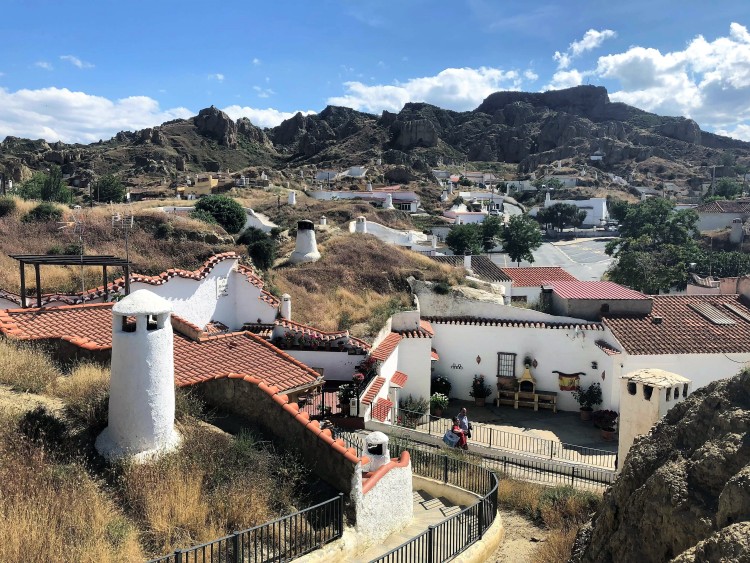
In Andalucia, close to Granada, lies an area famous for its homes built directly into caves in the rocks. This is also the site of one of the oldest settlements in Spain, dating back to the stone age. However, the caves in this area are a bit more modern, dating back to the Moors time, between 500 and 1,000 years old. People here didn’t (generally) move into existing caves, rather the homes were dug out of clay and earth by hand. The cave homes offered cool temperatures during Andalucia’s hot summers.
At the beginning of June, we spent a night in a cave house/hotel called Cuevas Almagruz – it was a group 6 cave houses in a semi-circle carved into rock, with a pool in the center. The caves were located just about 15 minutes outside of Guadix in a town called Purullena. It was an amazing place! The boys were really excited to go in the pool, but unfortunately there was a rare thunderstorm the day we were there, so they didn’t get to go in. We don’t often visit places more than once (so many things to see and do!!) but we would love to go back there, maybe when the weather is hot, and we could enjoy the cool cave and swimming pool!
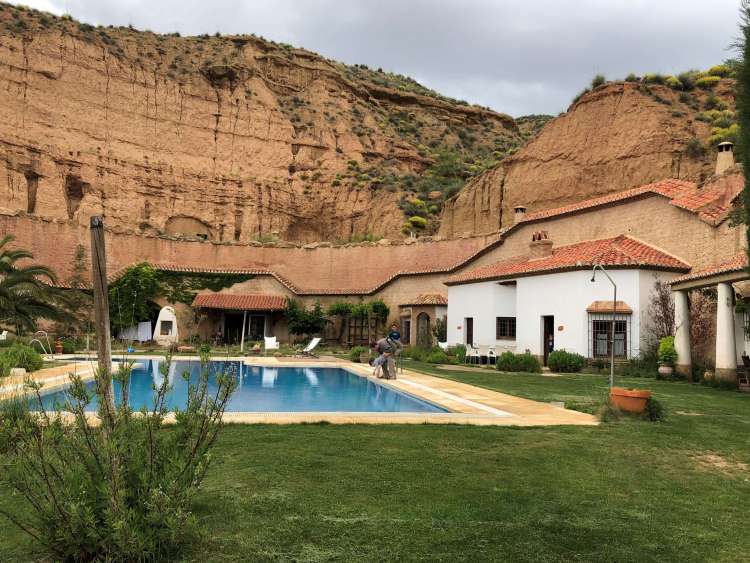
A view of the cave houses – each house has a facade, then is built into the wall of the rock behind it. The one we stayed in has the white facade on the right. And no, C is not dropping N head first into the pool – he is helping him feel the water temperature 🙂
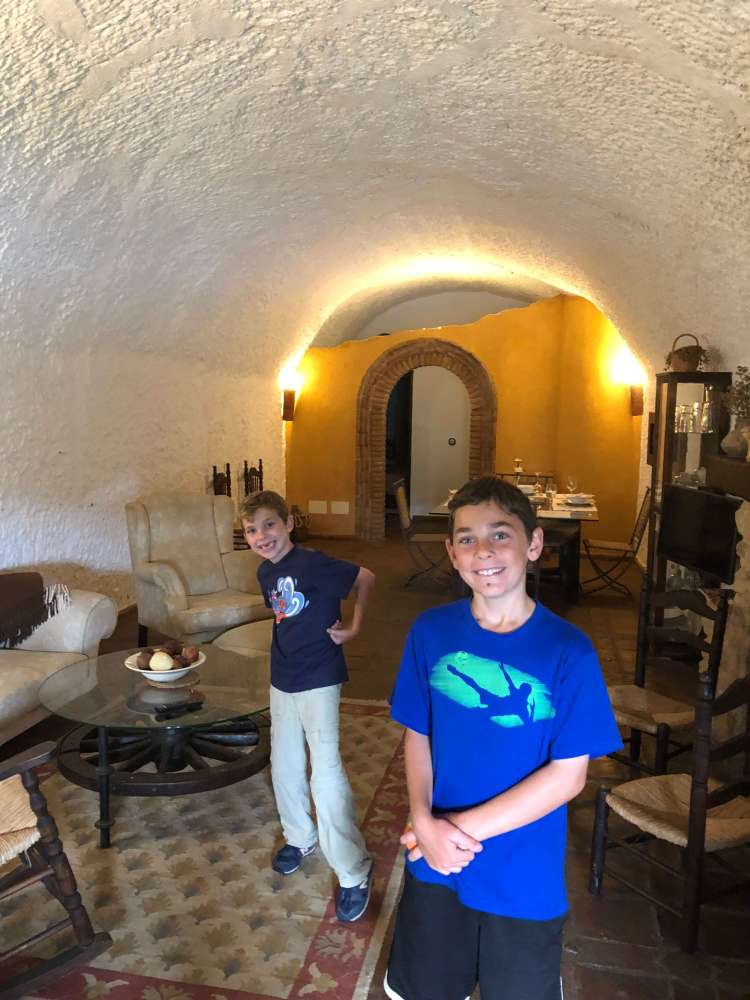
Inside the spacious cave house
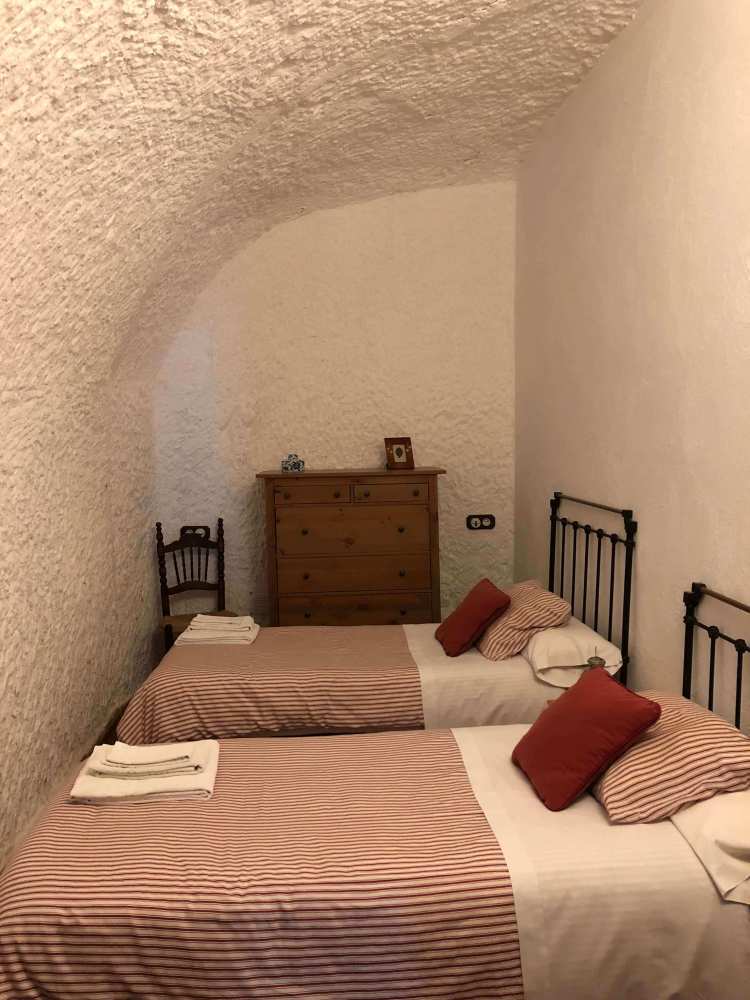
Cave house bedroom
The morning after we woke up in our cave house, we had planned to explore the area. Then, the owners mentioned that they were talking some other guests on a tour, and did we want to join them. Did we ever! They didn’t charge us at all for the tour, and I had read reviews before booking that they had done the same for other guests before as well. What a nice couple!
So – first the owner took us on a quick tour of the interpretation center on their property, showing us some information about the history and geography of the local area, including both the stone age inhabitants and the cave dwellers that came later.
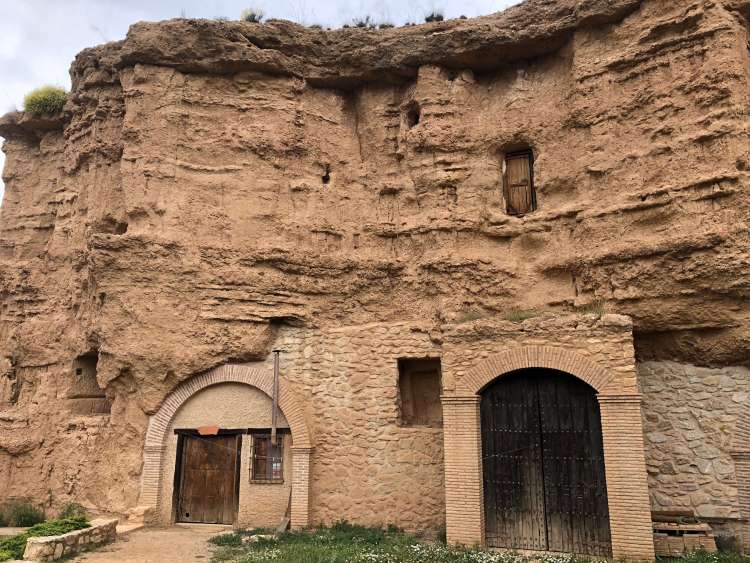
The interpretation center was (of course!) also built into a cave
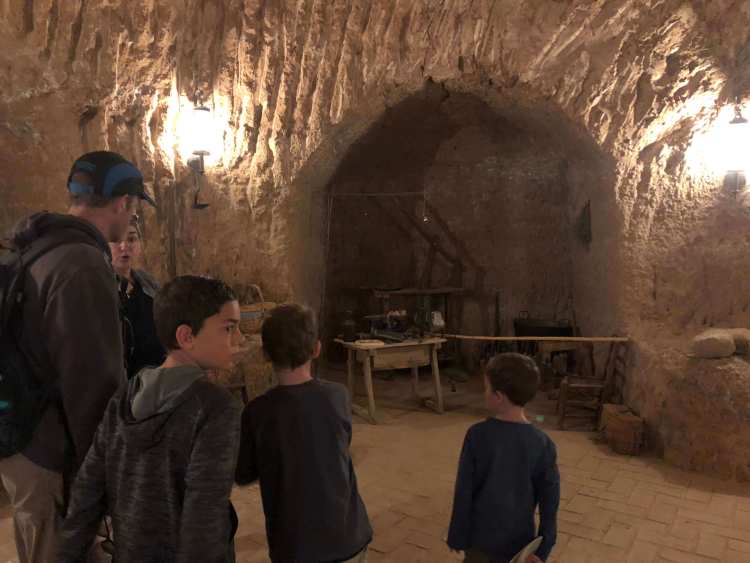
Inside the interpretation center, listening to the guide explain about the tools the first settlers in this area used
We headed out in our car, along with the tour guide and two families from Madrid. Our first stop was a viewpoint over the badlands of Purullena. It was a beautiful landscape that reminded me a lot of the American Southwest. We just did a little walk above the viewpoint, but I would like to go back and hike through them sometime.
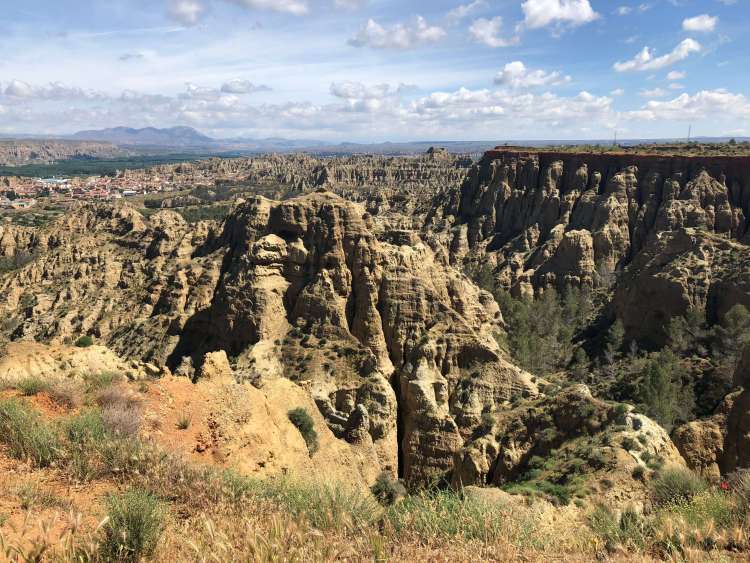
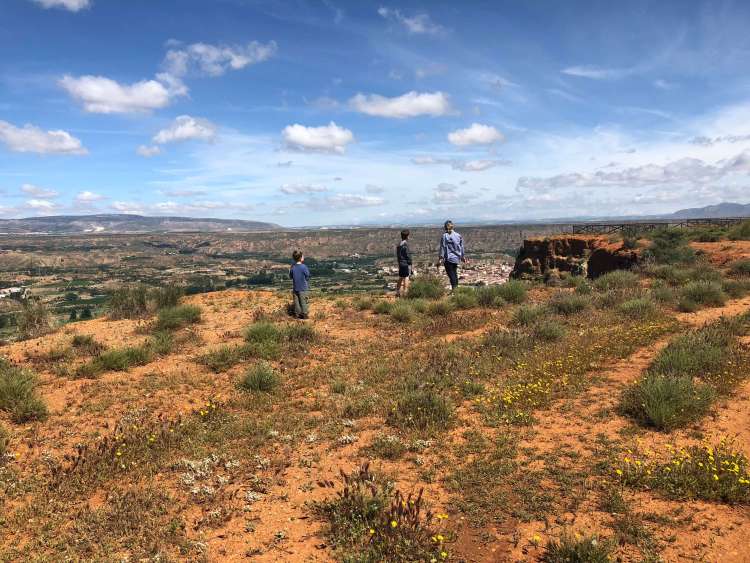
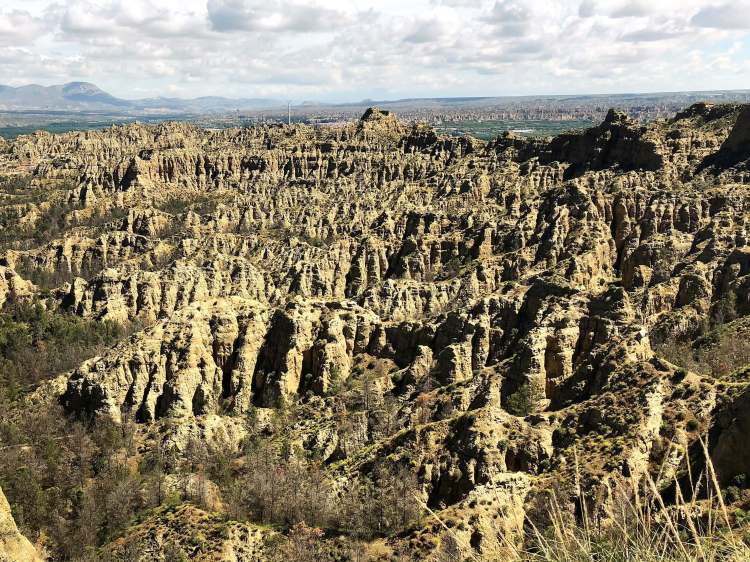
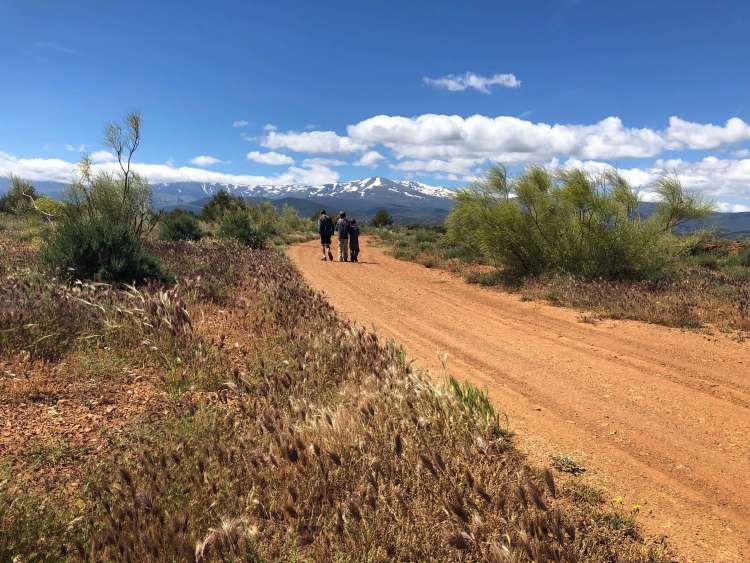
Though the landscape is very different here, we are still quite close to the Sierra Nevada mountains.
After checking out the view over the badlands, we got back in the car and drove a bit north, to a spot outside Alicun de la Torres, an amazing irrigation canal flowing with warm, thermal water that was created naturally a few hundred thousand years ago Excuse my lack of detail; the explanation was in Spanish, so I didn’t understand all if it, but from what I think I understood, an earthquake moved the flow of the water, and it resulted in the canal being raised about 15m above the ground.
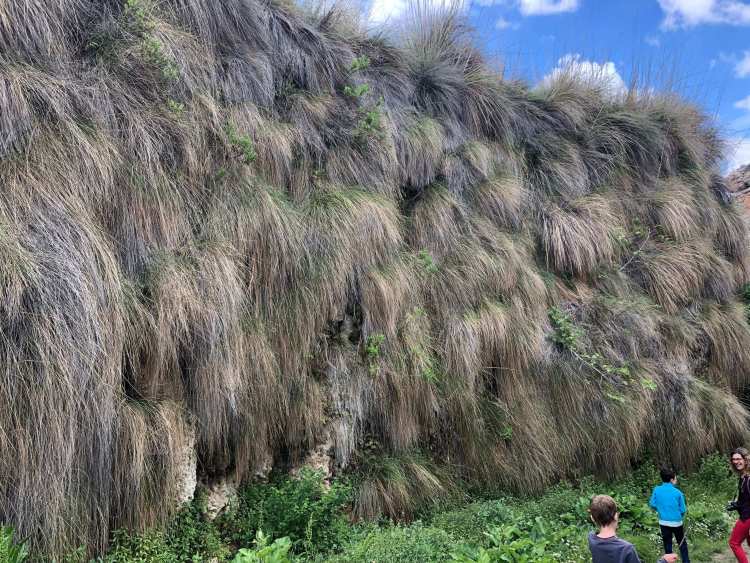
Love the huge “fuzzy” wall! the canal runs at the top of the wall, and the plants grow from water that drips off the side
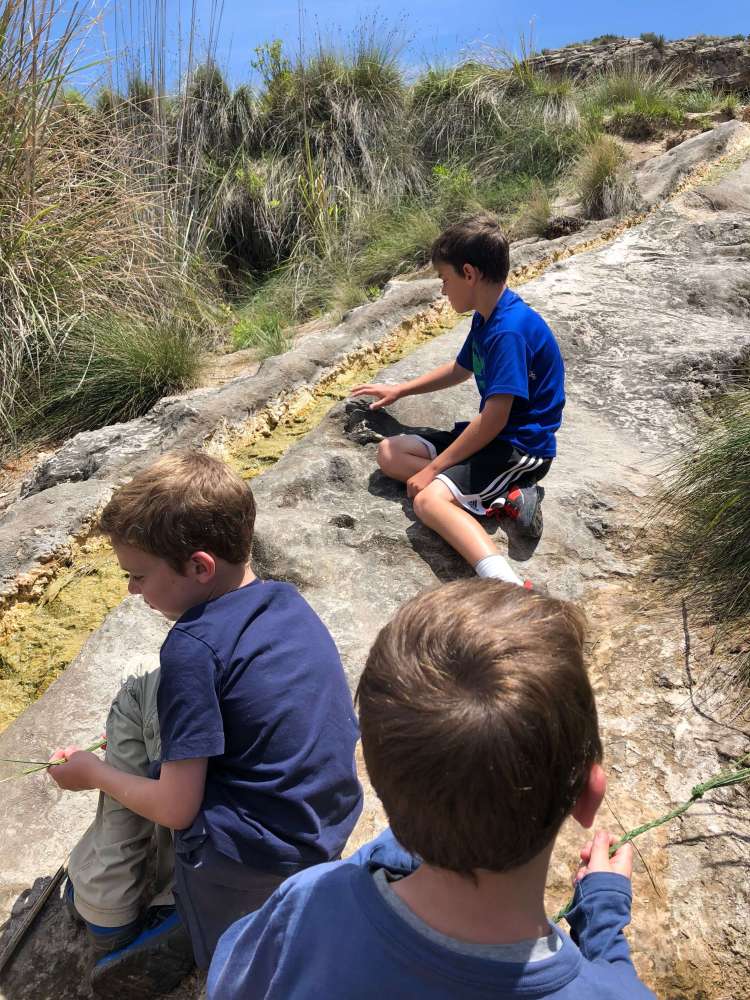
View of the canal from above. The water running through it is warm, coming from a thermal spring.
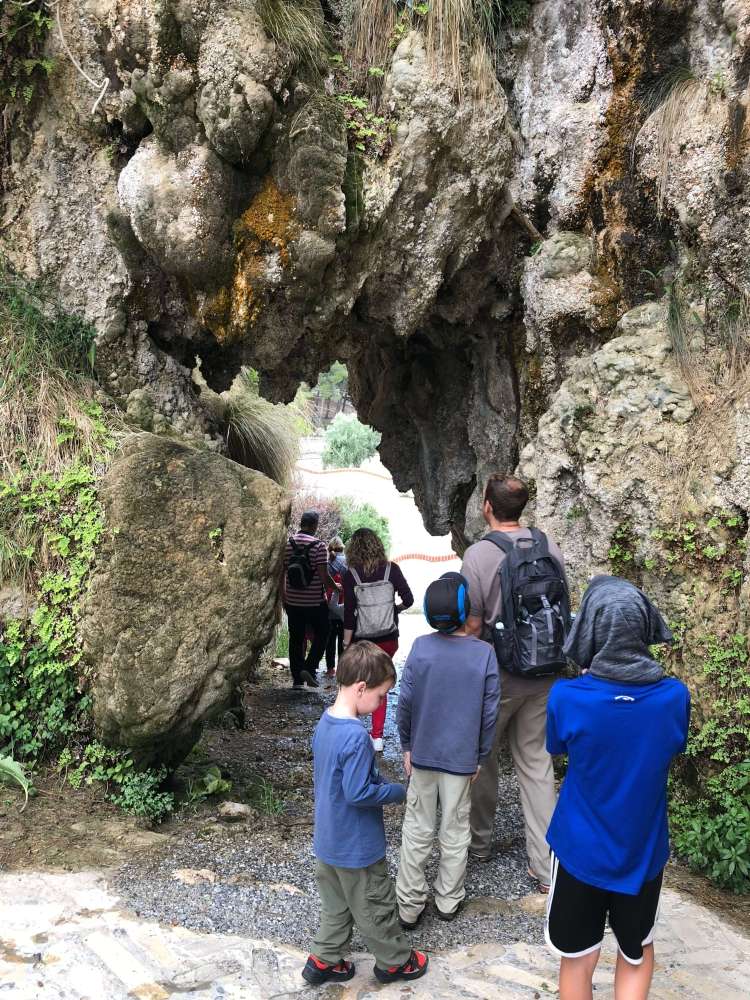
walking under the wall through a hole in the rock
Nearby were dolmens, showing that neolithic people once inhabited the area, which would seem to make sense with the good access to the thermal spring. There is an interpretation center and higher concentration of dolmens in the nearby Gorafe megalithic park, which we didn’t get to, but from what I can find, the dolmens in the area date from 1,000 to 2,000 BC, including the ones we visited.
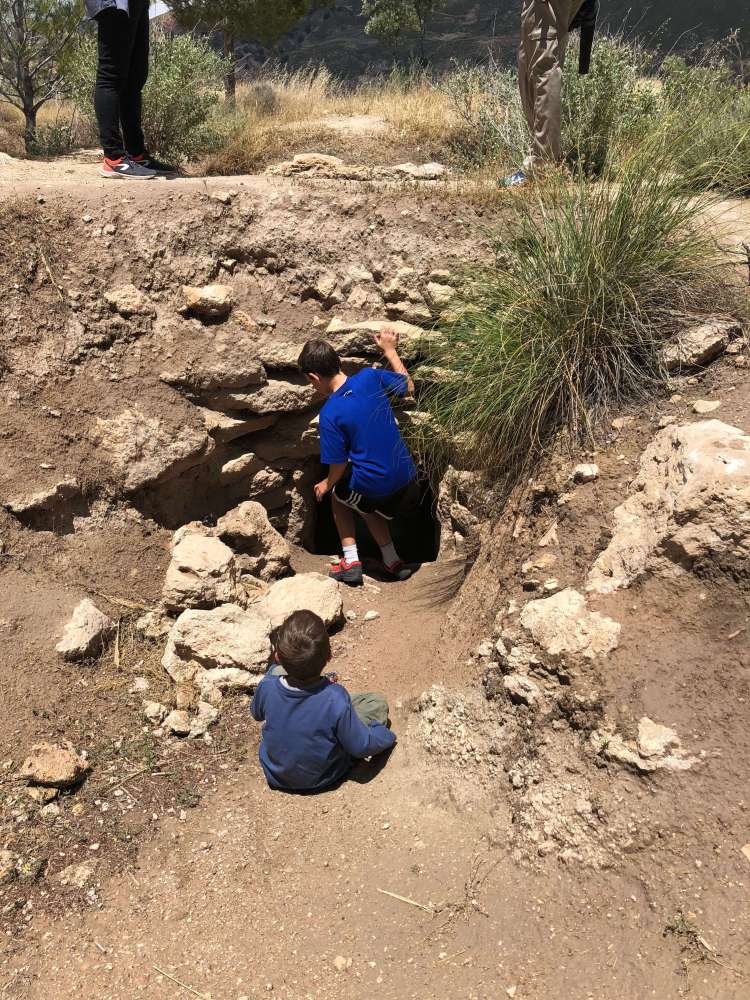
Entering the dolman – the entrance was kid-sized, no adults even tried to get in!
After the stops at these two places, we said a huge thank you and goodbye to our host for the wonderful tour, and took off on our own to explore the barrio of cave houses in Guadix. After our surprise bonus tour, we were pretty tired and hungry, so no one wanted to spent too much time walking around Guadix (yet another reason we need to head back here!), so we just grabbed a quick bite to eat, and followed the signs on the road to the barrio de cuevas. At first we didn’t even notice we had arrived, since the front of the houses didn’t look much different, then we looked more carefully and spotted chimney sticking out of hills and rock walls right behind houses, and we knew we had arrived.

In the barrio, there was a great viewpoint that let us look out over the city and get a good look at the caves, and particularly the white chimneys dotting the area. There were people offering tours of their cave homes, but since we had just spent the night in one, we didn’t go inside.

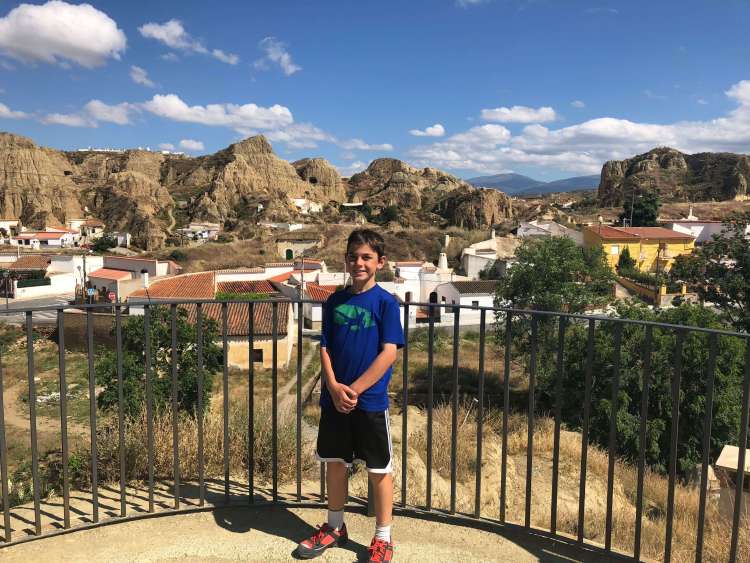
We had just over 24 hours in this area, but we had such an adventure, we hope to get back there to explore more!


